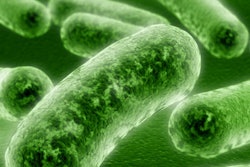Japanese scientists have found that the odorous compound responsible for halitosis is ideal for harvesting stem cells taken from human dental pulp (Journal of Breath Research, February 27, 2012).
Researchers from Nippon Dental University showed that hydrogen sulphide (H2S) increased the ability of adult stem cells to differentiate into hepatic (liver) cells, enhancing their reputation as a reliable source for future liver-cell therapy. It is the first time that high purity liver cells have been produced from dental pulp, the researchers noted.
"High purity means there are fewer 'wrong cells' are being differentiated to other tissues, or remaining as stem cells," Ken Yaegaki, DD, PhD, the study's lead author, said in a press release. The results suggest that patients undergoing transplantation with the hepatic cells may have little possibility of developing teratomas or cancers, as can be the case when using bone marrow stem cells, he added.
The researchers used stem cells from dental pulp from the teeth of dental patients who were undergoing routine extractions.
Prepared cells were separated into two batches (a test and a control) and the test cells incubated in a H2S chamber. They were harvested and analysed after three, six, and nine days to see if the cells had successfully transformed into liver cells.
To test if the cells successfully differentiated under the influence of H2S, researchers did tests looking at features that were characteristic of liver cells. In addition to microscopic observations, researchers investigated the cell's ability to store glycogen and recorded the amount of urea contained in the cell.
Compared with the traditional method of using fetal bovine serum to produce the cells, the method is more productive and safer, according to Dr. Yaegaki.



















